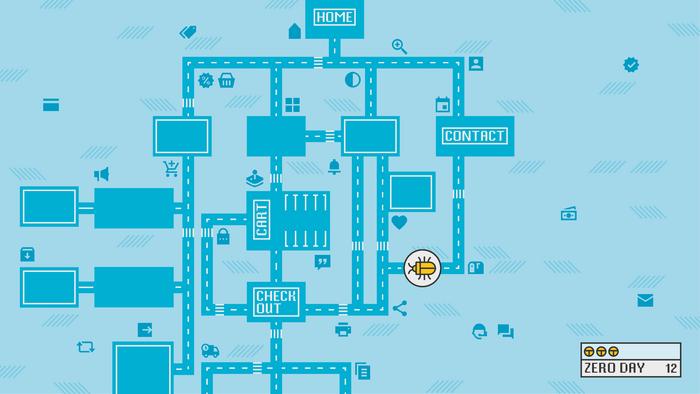
The landscape of cybersecurity continues to evolve, particularly with the emergence of innovative automated web application scanners. A compelling example of this advancement is YuraScanner, a groundbreaking tool developed by researchers at the CISPA Helmholtz Center for Information Security. Unlike traditional scanners, YuraScanner harnesses the capabilities of Large Language Models (LLMs) to navigate web applications with a human-like understanding, uncovering vulnerabilities that were previously elusive to conventional methodologies.
The fundamental appeal of YuraScanner lies in its unique approach to security testing. By implementing an autonomous task execution framework, it interacts with web applications as a genuine user would, rather than merely launching automated attacks from a distance. This adaptation not only makes YuraScanner more effective in identifying security issues but also significantly enhances its ability to discern the complexity of modern web applications, which often involve intricate user workflows. The reliance on LLMs allows YuraScanner to excel in depth and detail, executing tasks and navigating workflows dynamically.
Through rigorous testing, YuraScanner has already demonstrated its capabilities by analyzing twenty distinct web applications and revealing twelve previously undetected zero-day cross-site scripting (XSS) vulnerabilities. This revelation is notable because XSS vulnerabilities can lead to severe security breaches, enabling attackers to manipulate user sessions and compromise sensitive information. The potential implications of YuraScanner’s findings are not merely theoretical; they underscore a growing need for advanced scanning techniques in the cybersecurity landscape, particularly as cyber threats become increasingly sophisticated and pervasive.
Today’s web applications comprise multifaceted functionalities and complex user interactions that pose challenges for conventional scanners, which often rely solely on predefined sequences of operations. The innovation brought forth by YuraScanner is primarily attributed to the integration of LLMs with its crawler component. By leveraging the extensive training data embedded in these models—ranging from documentation to real-world web interactions—YuraScanner can intelligently discern potential entry points within a web application’s architecture.
Aleksai Stafeev, a researcher at CISPA, emphasizes that one of the challenges with automated security testing lies in accurately mapping the application’s features and workflows. The highly dynamic nature of contemporary applications necessitates a testing tool that can adapt to varied scenarios and operate with a contextual understanding of the application. Traditional tools often stumble at this critical juncture, as they lack the nuanced understanding to accurately engage with multi-step processes.
What sets YuraScanner apart is not merely its ability to uncover vulnerabilities; it also redefines how automated scanning is conducted. Previous iterations of automated scanners often traversed a web application’s surface rather than delving into its depths. In contrast, YuraScanner navigates through applications methodically, executing the sequential actions necessary to complete user tasks. This depth of exploration is particularly beneficial when dealing with complex user interfaces that require specific actions, such as adding items to a shopping cart or navigating through check-out processes.
By guiding its operations with the intelligence of an LLM, YuraScanner optimizes its scanning procedures significantly. The synergy between the crawling function and the LLM allows the scanner to process contextual cues from the application’s responses, refining its approach as it progresses through the workflow. This dynamic functionality enables real-time adaptations, enhancing the scanner’s ability to unearth security flaws that may reside within intricate workflows.
The comparative study conducted alongside YuraScanner’s deployment revealed stark contrasts in the detection rates of vulnerabilities when stacked against traditional tools like Black Widow. While Black Widow identified a mere three XSS vulnerabilities during similar testing phases, YuraScanner succeeded in detecting four times that amount. This differential not only highlights YuraScanner’s superior capabilities but also sets a precedent for employing LLMs in the realm of web application security testing.
The researchers’ decision to publish YuraScanner’s source code on GitHub indicates a commitment to fostering community engagement and encouraging subsequent developments in this domain. By making the tool publicly accessible, CISPA researchers invite collaboration and innovation from the broader cybersecurity community, which could catalyze future advancements in automated security scanning technologies.
Furthermore, the implications of YuraScanner’s research extend beyond immediate vulnerabilities. By enhancing the accuracy and effectiveness of automated web application scanning, the tool contributes to a more secure online environment. As cyber threats evolve, the demand for sophisticated security mechanisms will only increase. YuraScanner is poised to play an essential role in this landscape, equipping organizations with innovative means to protect themselves in the ever-changing digital world.
As the cybersecurity community gears up for its presentation of YuraScanner at the upcoming Network and Distributed System Security Symposium (NDSS) 2025, the anticipation surrounding this technology reflects its potential to redefine standard practices in web application security. Researchers will highlight the collaboration of LLMs in enhancing the efficacy of automated scanners, showcasing an innovative future for cybersecurity practices. This presentation is expected to draw attention from professionals across the industry, further galvanizing interest in advanced scanning techniques.
Overall, YuraScanner represents a significant leap forward in the field of cybersecurity. Its ability to blend human-like comprehension with automated scanning processes not only enhances vulnerability detection rates but also paves the way for improved methodologies in web application security. As the tool gains traction, it holds much promise in addressing the burgeoning risk landscape that accompanies digital transformation in organizations worldwide.
Subject of Research: YuraScanner and its application in automated web application scanning utilizing Large Language Models.
Article Title: YuraScanner: Revolutionizing Automated Web Application Security Testing
News Publication Date: October 2023
Web References: N/A
References: N/A
Image Credits: Credit: CISPA
Keywords
Cybersecurity, Automated Scanners, Large Language Models, Cross-Site Scripting, Web Application Security.
Tags: advanced cybersecurity solutionsautomated vulnerability detectionautonomous task execution frameworkCISPA Helmholtz Center researchdynamic workflow recognitionhuman-like web navigationinnovative security testing methodsLLM-powered web application scannermodern web application complexitiesvulnerabilities in web applicationsYuraScanner cybersecurity toolzero-day cross-site scripting vulnerabilities





